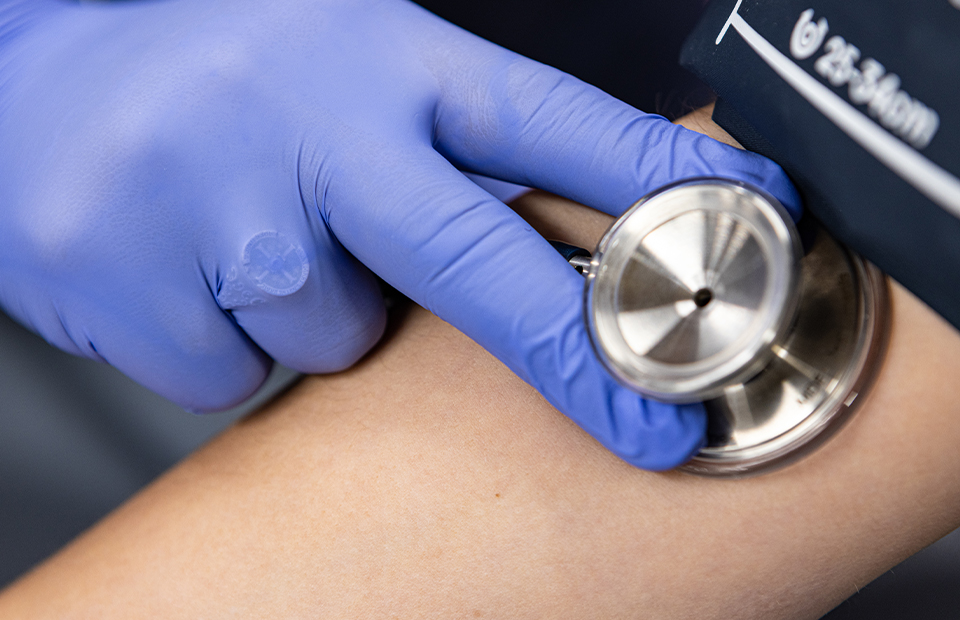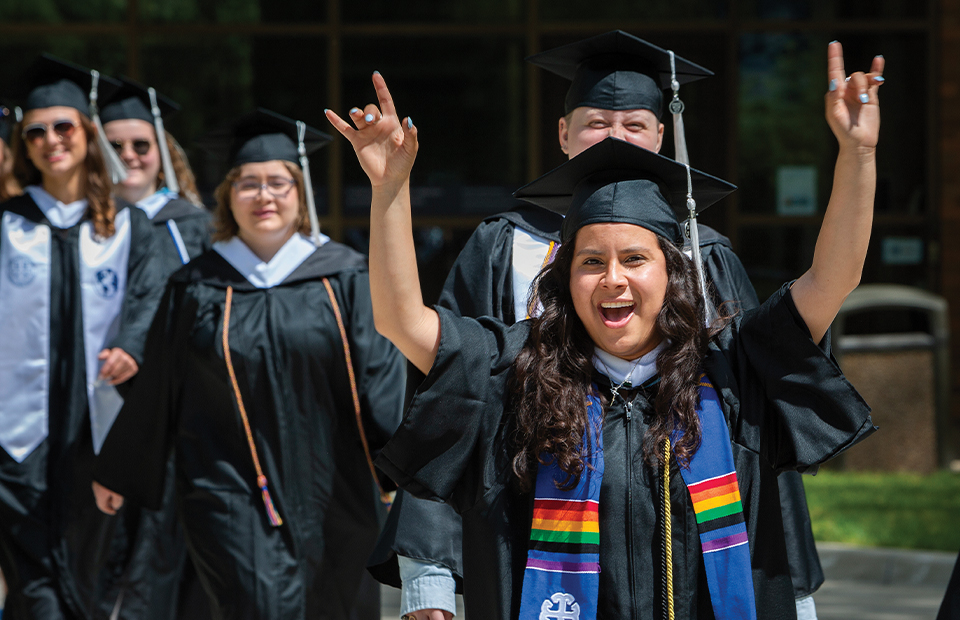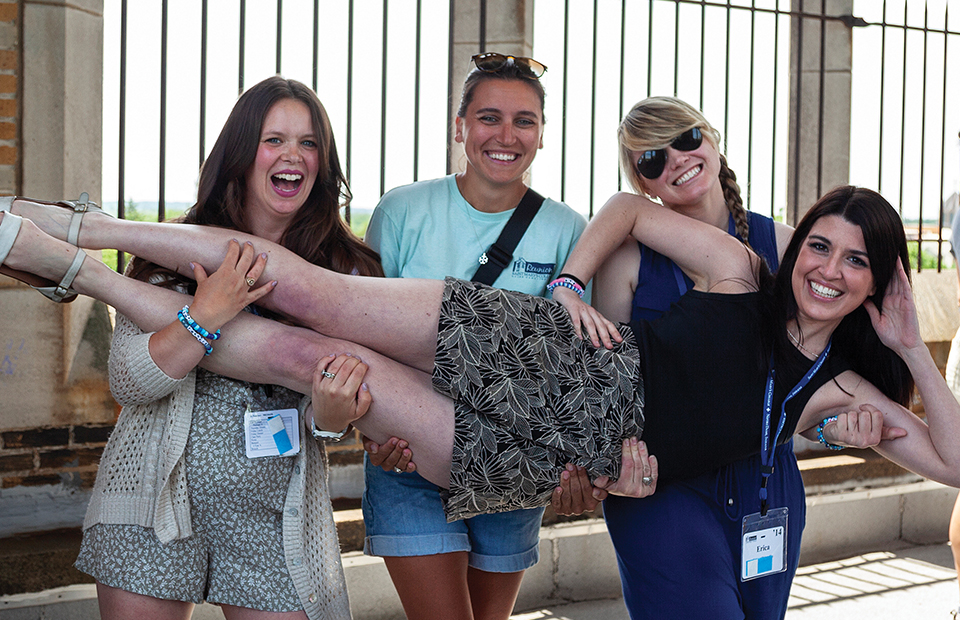In the Spotlight: Vanessa Hilliard Young
Saint Mary's Stories

You’ve been at the College for seven years. What has Saint Mary's come to mean to you?
I came to campus right after finishing my PhD at Clemson University. The reason Saint Mary’s is home has everything to do with the faculty, staff, and students of the biology department. I have wonderful colleagues who are great to work with, but they're also great friends, and the students I get to work with are fabulous. I feel supported and encouraged every day when I come to work, which strengthens my relationships with students as well.
Tell us a little about that work.
My research focus broadly examines questions related to organismal form and function, with particular focus on locomotor structures (i.e., limbs and tails). By integrating the fields of comparative morphology, biomechanics, ecology, and evolution, we can answer questions about the evolution of organismal structures and their functions in a variety of habitats.
What is your classroom dynamic? Has it evolved since you began teaching?
My lecture classes tend to be early in the morning, so high energy is what I strive for in class. In the lab, it's a much looser structure. I circulate the room and interact with students in small groups, so it's much more personal. Prior to coming to Saint Mary’s, I had taught only biology majors. Saint Mary’s hired me to teach a course for nursing students, which is an entirely different population of students. I approached my teaching as if I were instructing biologists and learned quickly that it was not an effective approach. Over the years, particularly with nursing students, I've figured out how to convey the material in relevant ways and how it also might fit into the bigger picture of how they will treat patients in the future. In other words, I have learned—and continue to learn—how to make biological concepts relevant and meaningful to students who intend to pursue careers in a wide variety of fields.
Can you share a memorable moment?
I had a student (Mohra Anderson ’22) who was pursuing a student-designed major in kinesiology. For her senior comprehensive, she was interested in injury and muscle activation in string musicians. Her research explored shoulder muscle activation in violin players. She prescribed them a series of stretches and exercises; then, she studied how muscle activation changed over a period of time. It was a really interesting question, and to witness her take that research from the ground up was fascinating. Plus, we got live violin music in Science Hall for a while!
Our prolific squirrel population is also among your research topics. What can our students learn from this field research experience?
The squirrel research I’ve done on campus with students is probably the most adventurous because we never quite know what we'll get with the squirrels. Sometimes, we check the traps and they’re empty. Other times, we find multiple squirrels and even groundhogs in the traps! Teaching students to handle wild animals is part of the adventure. I’ve had students research everything from tail length to alarm calls, and this research requires getting up close to the animals. Watching them become comfortable handling these animals and witnessing the growth from start to end of the research project is always awesome.
What projects are you involved in outside the classroom?
For the last couple of years, I've worked with colleagues at other institutions to promote equity, inclusion, and diversity in field-based sciences (ecology, geology, etc.). These are largely white, male-dominated fields, and there are significant safety concerns for researchers, especially for those who are marginalized. When you're going out into remote locations, certain identities are not quite as safe in those environments as others. My colleagues and I led an NSF-funded symposium in 2023 on this issue at the Society for Integrative and Comparative Biology meeting. Afterward, we received an invitation to develop a workshop for a biological field station meeting in Costa Rica, which was really successful! We worked with over 50 individuals, representing 10 countries, on risk assessment, mitigation, and inclusive field practices. I am also in the process of writing a new textbook for the teaching of comparative vertebrate and human anatomy. This book will provide an ecology- and function-oriented approach to understanding the evolution of vertebrate structure and human anatomy. It will also highlight current work by diverse scholars in the field and contain more comprehensive female anatomy content. It will also follow published recommendations for making academic biology and anatomy more inclusive for LGBTQ + individuals by including diversity, equity, and inclusion-informed human-specific modules for each anatomical system.
If you could travel anywhere in the world, where would you go and why?
Ecuador is at the top of my list. I'm always eager to go back, and I've recently started a new research project there! Aside from Ecuador, I would love to travel to Australia and New Zealand for their unique animals.I'd also like to get to some of the more remote field stations as part of our field safety and inclusion work (e.g., McMurdo Station in Antarctica; Toolik Field Station in Alaska). I've never been to Africa or Asia, so I'd like to visit both continents and learn a bit more about those areas, cultures, and wildlife, too.
Can you say more about your new research project in Ecuador?
I'll be working at Tiputini Biodiversity Station, on the edge of Yasuní Biosphere Reserve, which is considered the most biodiverse location on the planet. I will be conducting population studies on yellow-footed tortoises. There's not a lot known about the ecology of this species. To learn more, a group of researchers, including SMC students, are marking tortoises and fitting them with GPS data lockers so we can get GPS points on them periodically over several months or years. From there, we start to characterize what the populations look like, which can help determine future conservation strategies for the species. One really exciting aspect of this study is that it is an integral part of our revised Environments of Ecuador study abroad course, which will run in May 2025. Students participating in this course will not only have the opportunity to travel and learn about the different environments and cultures of Ecuador, but they will also gain hands-on field research experience and collaborate with local indigenous communities to develop educational resources that highlight the importance of incorporating traditional knowledge into modern research methods.



